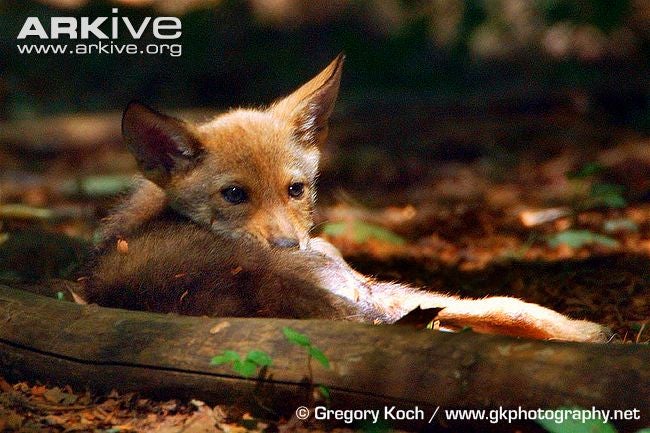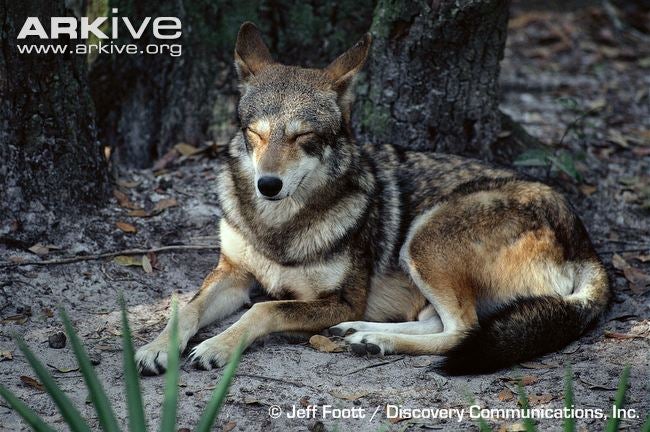mythbri
Filed to: WEDNESDAY WOOF
This Wednesday Woof has the dubious honor of being the first since the new Kinja update. Let’s hope it tastes the same.

The Red Wolf (Canis rufus) used to be considered a subspecies of Gray Wolf, and was formerly known as Canis lupus rufus. Genetic studies have shown that morphologically, the Red Wolf is halfway between the Coyote and the Gray Wolf. Indeed, it was believed to be an old hybrid between the two, but the most recent review of these studies (October 2012) concluded that the Red Wolf is a distinct species from both the Gray Wolf and the Coyote, and the Red Wolf has an introgressive hybridization relationship with the Coyote.
The Red Wolf saw a similar decline in population as the Gray Wolf, and by 1971 its numbers were so low that conservationists began concerted efforts to save it. By 1980, however, the Red Wolf was believed to be completely extinct in the wild. A captive breeding program in North Carolina began a species re-introduction in 1987, and now the Red Wolf is successfully breeding in the wild – though it’s not yet completely out of danger.

Red Wolves measure up to 65 inches (165 cm) in body length, measure as tall as 31 inches (79 cm) at the shoulder, and weigh up to 90 pounds (41 Kg) – though the average weight is closer to 54 pounds (24.5 Kg). Males are about 10% heavier than females. Red Wolves are called so because of the reddish buff colors in their coats. Their historical range included all of the southeastern United States, as far north as Pennsylvania, and as far west as central Texas. Fossil records indicate that their range might have extended as far north as Canada, before wolves began to be systematically wiped from North America during colonization. Now, though, they range only in North Carolina, on 1.7 million acres of protected land.
Red Wolves live in extended family groups, which are led by a breeding pair and their young from older litters. It’s believed that the young are tolerated by the breeding pair until they reach sexual maturity, at which point they are expelled from the group to form their own. The Red Wolves that have been re-introduced prey on white-tailed deer, nutria, rabbits and raccoons, though in the past their diet would have varied depending on their specific habitat.

The breeding program that was developed to save the Red Wolf from extinction began in Tacoma, Washington, at the Point Defiance Zoological Gardens in 1971. Through an evaluation process intended to exclude hybrids from the program, they ended up with only 14 individuals qualified to serve as the breeding population, and these animals only had the genetic diversity equivalent to eight animals. The project intended to re-introduce a permanent population in 1987 led to four male/female pairs released into the Alligator River National Wildlife Refuge in North Carolina. The project has been successful.


